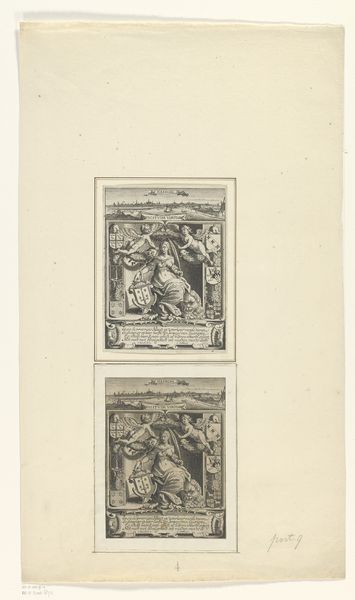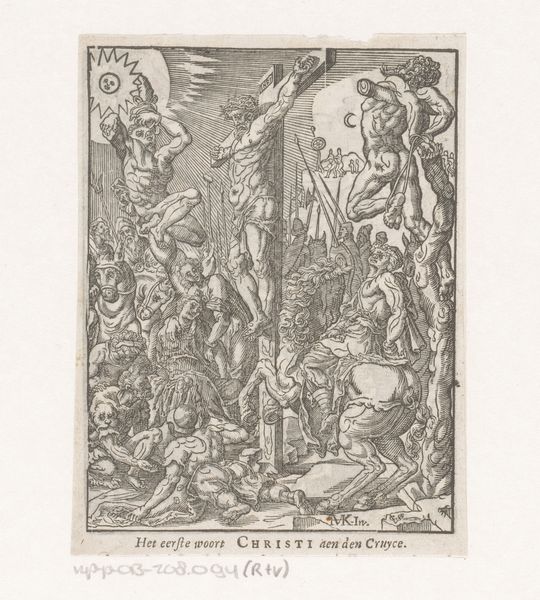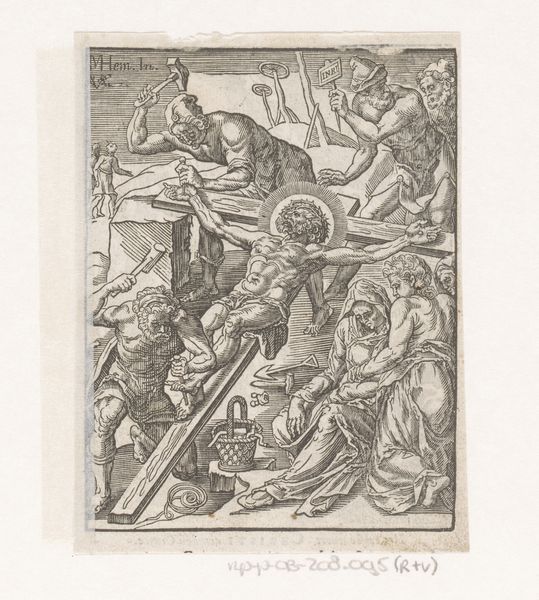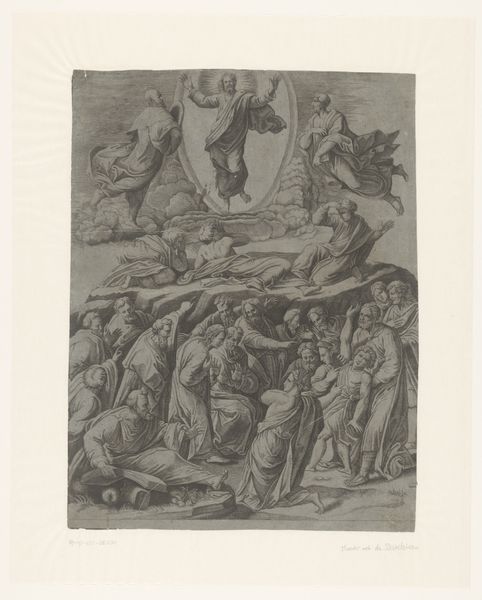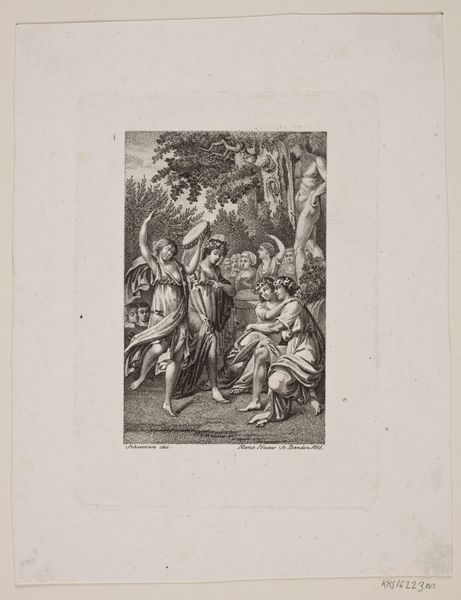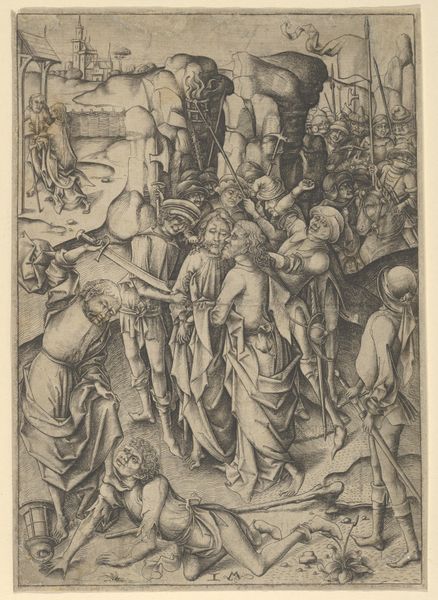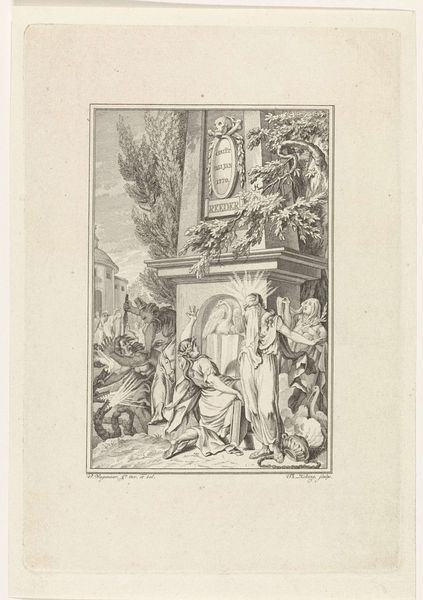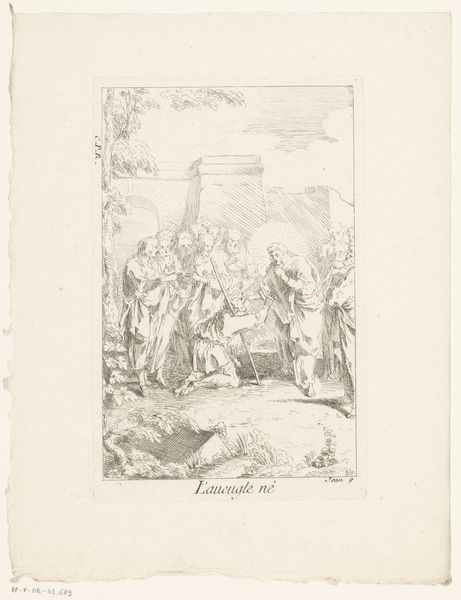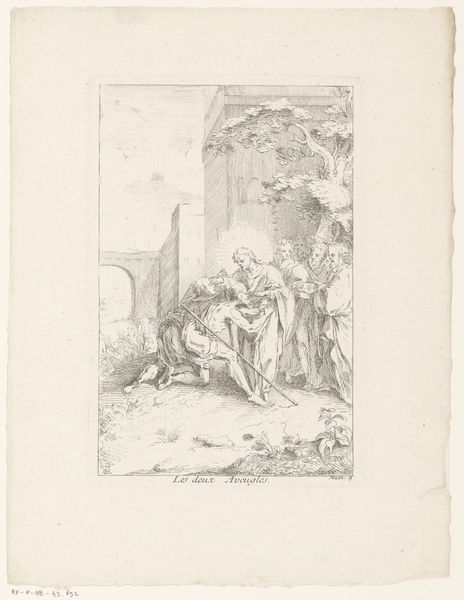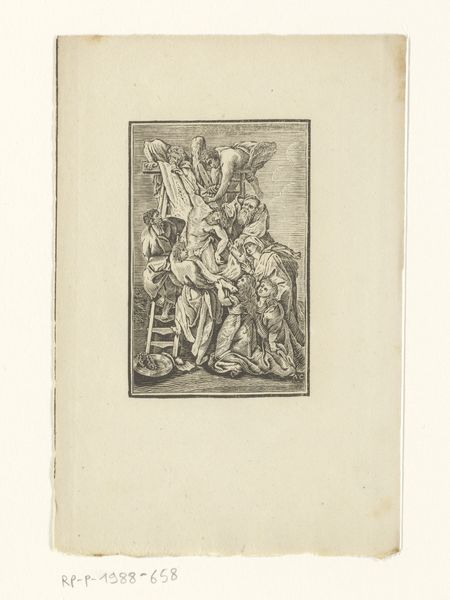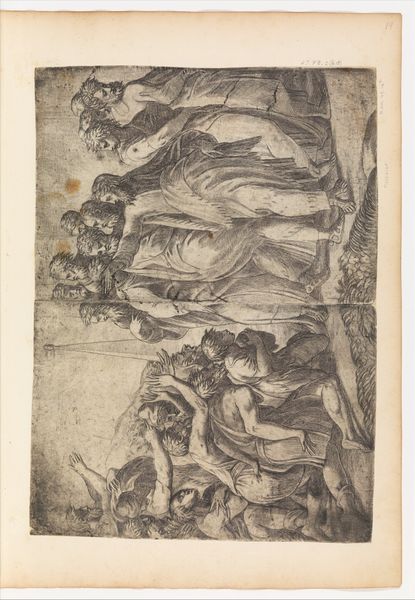
print, engraving
#
baroque
# print
#
landscape
#
figuration
#
history-painting
#
engraving
Dimensions: height 250 mm, width 177 mm
Copyright: Rijks Museum: Open Domain
Curator: It feels like I'm peering into another dimension! The detail crammed into this print—it's astounding. Editor: You've keyed in on its powerful density right away. What we're looking at is titled "Christus aan het kruis," or Christ on the Cross, created before 1671 by Heinrich Ulrich. It’s an engraving, so every single line is painstakingly etched. Curator: The cross towers, but it’s surrounded, almost swallowed, by figures—mourners, soldiers…even other crucified figures way off in the distance. There’s such an energy, such movement—and yet it's also static, held perfectly within this frame. Editor: Yes, you pick up on that tension so acutely. Baroque art is full of grand drama and elaborate detail. But, really, let's talk about the cross as a symbolic intersection. Here, we have a meeting point, culturally and emotionally. Ulrich uses it as a stage where divine sacrifice meets human chaos. Do you see the skulls at the bottom, a memento mori, an awareness of life's temporary quality. Curator: Ugh, I see those reminders of mortality all too clearly. Skulls…so, where’s the hope? Or is the point here only that life ends, even for a divine figure? Is the crucifixion the ultimate symbol of unjust fate? Editor: It's a potent question. Traditionally, the iconography of the crucifixion speaks to both profound loss and, ultimately, resurrection. But artists play with these symbols, they aren't always didactic, they introduce their own anxieties and interpretations. What do you feel looking closer at Christ's figure here? Curator: The body seems to arch… as if pulled towards the heavens yet grounded by earthly suffering. It really captures this feeling of being utterly, horribly torn. I always have mixed reactions to these works: admiration of course for technique and…horror, always. Editor: "Horror, always" could be a succinct description of the lingering resonance. And to recognize the power to continue sparking responses after so many centuries underscores the depth of Ulrich’s artistic achievement here, don't you agree? Curator: It does. Absolutely. I still want to look away, and yet... I can't. And isn't that what great art should do, I think, keep you questioning long after you should probably leave the museum?
Comments
No comments
Be the first to comment and join the conversation on the ultimate creative platform.
